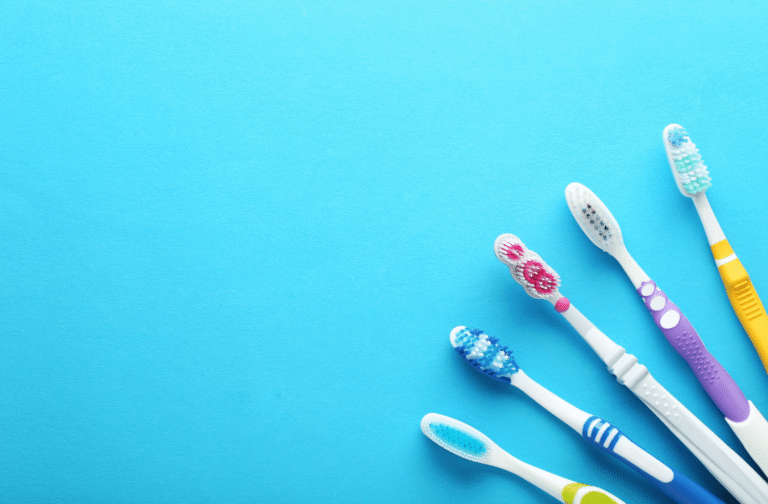Maintaining good oral health starts with the basics, and choosing the right toothbrush is at the top of the list. With the vast array of toothbrush options on the market, finding the perfect one can feel overwhelming. Is an electric toothbrush better than a manual? Should you opt for soft bristles over hard ones? This guide will help you understand what to look for in a toothbrush and how to make the best choice for your needs.
By the end of this post, you’ll know everything from the different types of toothbrushes to expert recommendations that can keep your teeth and gums healthy.
Types of Toothbrushes
Toothbrushes generally fall into two broad categories: manual and electric. Both have their pros and cons, and your choice often depends on personal preference and specific dental needs.
Manual Toothbrushes
Manual toothbrushes are the traditional choice and are widely available at an affordable price. They’re easy to use and come in diverse styles, head sizes, and bristle types. However, they require proper technique to ensure effective cleaning, which can be a challenge for some users.
Pros:
- Affordable and widely accessible
- No power source required
- Perfect for travel
Cons:
- Requires good brushing technique to be effective
- Time-consuming compared to electric toothbrushes
Electric Toothbrushes
Electric toothbrushes are increasingly popular for their convenience and effectiveness. These brushes use oscillating or sonic vibrations to clean your teeth, which can make them more efficient in removing plaque compared to manual brushes.
Pros:
- More effective plaque removal
- Built-in timers to ensure proper brushing time
- Ideal for people with limited mobility
Cons:
- More expensive upfront
- Requires charging or battery replacements
Features to Consider in a Toothbrush
When choosing a toothbrush, paying attention to specific features can make a big difference in your oral care routine.
Bristle Type
Bristle type is one of the most important considerations. Soft bristles are typically recommended by dentists because they are gentle on your gums and enamel, reducing the risk of irritation or erosion. Medium and hard bristles can be harsh and aren’t usually necessary for effective cleaning.
Head Size
Choosing the right head size ensures your toothbrush can comfortably reach all areas of your mouth, including back teeth. A compact or small brush head is often more effective for precision cleaning.
Handle Design
Handle design affects how comfortable and easy a toothbrush is to use. Look for non-slip grips or ergonomic designs that allow for better control, especially if you’re brushing for the full two-minute recommendation.
Toothbrushes for Special Needs
Not all toothbrushes are created equal, especially when it comes to users with unique dental needs. Here’s what to consider:
Sensitive Gums
If you have sensitive gums, opt for an ultra-soft bristle toothbrush. Electric toothbrushes with low-intensity settings can also be a gentle yet effective option.
Braces and Orthodontic Work
For individuals with braces, consider an orthodontic toothbrush with V-shaped bristles designed to clean around brackets and wires. An interdental brush can also help clean hard-to-reach areas.
Post-Dental Procedures
If you’ve recently had dental surgery or other procedures, your dentist may recommend a special post-care toothbrush that is extra soft to avoid aggravating the treated area.
Expert Recommendations
Dentists and hygienists consistently emphasize that the best toothbrush is one you’ll use correctly and consistently. Here are some expert tips:
- Electric toothbrushes are often recommended for individuals who struggle with proper brushing techniques or have limited dexterity, such as older adults or individuals with arthritis.
- Stick to soft-bristle toothbrushes to avoid damaging enamel or irritating gums.
- Consider investing in a toothbrush with a pressure sensor, especially if you tend to brush too hard.
- Replace your toothbrush every three months or sooner if the bristles are frayed.
Proper Techniques for Effective Brushing
Even the best toothbrush won’t work its magic unless used effectively. Follow these techniques to maximize your brushing routine:
- Position the Brush Correctly
Hold your toothbrush at a 45-degree angle to your gum line.
- Use Gentle, Circular Motions
Avoid scrubbing too hard; instead, move the brush in small circles for a thorough clean.
- Brush All Surfaces
Spend at least two minutes brushing, ensuring you clean the front, back, and chewing surfaces of your teeth.
- Don’t Forget Your Tongue
Your tongue can harbor bacteria, so gently brush it to improve your breath and oral health.
Toothbrush Maintenance and Replacement
Keeping your toothbrush clean and knowing when to replace it are crucial steps in your oral care routine.
How to Clean Your Toothbrush
- Rinse thoroughly with water after each use to remove toothpaste and debris.
- Store your toothbrush upright and allow it to air-dry.
- Keep your toothbrush separate from others to avoid cross-contamination.
When to Replace Your Toothbrush
The American Dental Association recommends replacing your toothbrush every three months or sooner if the bristles become frayed. Worn bristles can reduce cleaning effectiveness and harbor bacteria.
Your Smile Deserves the Right Toothbrush
Choosing the right toothbrush is a small yet impactful step toward improving your oral health. Whether you prefer a manual or electric toothbrush, focus on features like soft bristles and ergonomic designs. Special needs, such as braces or sensitive gums, may require more tailored options, and maintaining proper brushing techniques is crucial.
Looking for more advice on enhancing your oral care routine? Consult your dentist for personalized recommendations. Remember, a healthy smile starts with the right toothbrush!
